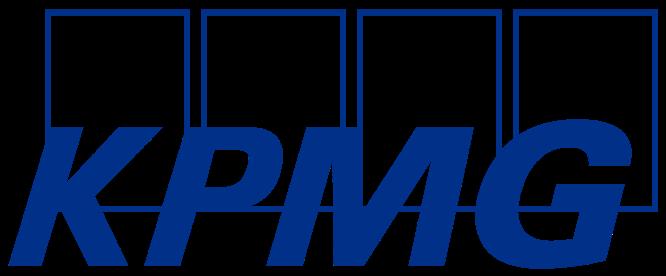APPENDIX C
NBTPP Financial Statements
The financial statements of the NBTPP have been prepared and approved by the Board of Trustees. The Board is responsible for the integrity and fair presentation of the statements, including amounts based on best estimates and judgments.
The Board maintains systems of internal control and supporting procedures to provide reasonable assurance that accurate financial information is available, that assets are protected, and that resources are managed efficiently.
The Board is assisted in its responsibilities by its Audit Committee, consisting of three Board members. The Audit Committee reviews the financial statements and recommends them for approval by the Board. The Audit Committee also reviews matters related to accounting, auditing, internal control systems, risk management as well as the scope, planning and findings of audits performed by the external auditors.
KPMG LLP
Frederick Square
77 Westmorland Street, Suite 700
Fredericton, NB E3B 6Z3
Canada
Telephone 506 452 8000 Fax 506 450 0072
INDEPENDENT AUDITOR’S REPORT
To the Board of Trustees of the New Brunswick Teachers’ Pension Plan
Opinion
We have audited the financial statements of New Brunswick Teachers’ Pension Plan (the Entity), which comprise:
the statement of financial position as at December 31, 2023
the statement of changes in net assets available for benefits for the year then ended
the statement of changes in pension obligations for the year then ended
and notes to the financial statements, including a summary of significant accounting policies (Hereinafter referred to as the “financial statements”).
In our opinion, the accompanying financial statements present fairly, in all material respects, the financial position of the Entity as at December 31, 2023, and its changes in net assets available for benefits and its changes in pension obligations for the year then ended in accordance with Canadian accounting standards for pension plans.
Basis for Opinion
We conducted our audit in accordance with Canadian generally accepted auditing standards. Our responsibilities under those standards are further described in the “ Auditor’s Responsibilities for the Audit of the Financial Statements” section of our auditor’s report.
We are independent of the Entity in accordance with the ethical requirements that are relevant to our audit of the financial statements in Canada and we have fulfilled our other responsibilities in accordance with these requirements.
We believe that the audit evidence we have obtained is sufficient and appropriate to provide a basis for our opinion.
Other Information
Management is responsible for the other information. Other information comprises the information, other than the financial statements and the auditor’s report thereon, included in a document entitled “Annual Report”.
Our opinion on the financial statements does not cover the other information and we do not and will not express any form of assurance conclusion thereon.
In connection with our audit of the financial statements, our responsibility is to read the other information identified above and, in doing so, consider whether the other information is materially inconsistent with the financial statements or our knowledge obtained in the audit and remain alert for indications that the other information appears to be materially misstated.
We obtained the information, other than the financial statements and the auditor’s report thereon, included in the Annual Report as at the date of this auditor’s report.
If, based on the work we have performed on this other information, we conclude that there is a material misstatement of this other information, we are required to report that fact in the auditor’s report.
We have nothing to report in this regard.
Responsibilities of Management and Those Charged with Governance for the Financial Statements
Management is responsible for the preparation and fair presentation of the financial statements in accordance with Canadian accounting standards for pension plans, and for such internal control as management determines is necessary to enable the preparation of financial statements that are free from material misstatement, whether due to fraud or error.
In preparing the financial statements, management is responsible for assessing the Entity’s ability to continue as a going concern, disclosing as applicable, matters related to going concern and using the going concern basis of accounting unless management either intends to liquidate the Entity or to cease operations, or has no realistic alternative but to do so.
Those charged with governance are responsible for overseeing the Entity’s financial reporting process.
Auditor’s Responsibilities for the Audit of the Financial Statements
Our objectives are to obtain reasonable assurance about whether the financial statements as a whole are free from material misstatement, whether due to fraud or error, and to issue an auditor’s report that includes our opinion.
Reasonable assurance is a high level of assurance, but is not a guarantee that an audit conducted in accordance with Canadian generally accepted auditing standards will always detect a material misstatement when it exists.
Misstatements can arise from fraud or error and are considered material if, individually or in the aggregate, they could reasonably be expected to influence the economic decisions of users taken on the basis of the financial statements.
As part of an audit in accordance with Canadian generally accepted auditing standards, we exercise professional judgment and maintain professional skepticism throughout the audit.
We also:
Identify and assess the risks of material misstatement of the financial stat ements, whether due to fraud or error, design and perform audit procedures responsive to those risks, and obtain audit evidence that is sufficient and appropriate to provide a basis for our opinion.
The risk of not detecting a material misstatement resulting from fraud is higher than for one resulting from error, as fraud may involve collusion, forgery, intentional omissions, misrepresentations, or the override of internal control.
Obtain an understanding of internal control relevant to the audit in order to design audit procedures that are appropriate in the circumstances, but not for the purpose of expressing an opinion on the effectiveness of the Entity's internal control.
Evaluate the appropriateness of accounting policies used and the reasonableness of accounting estimates and related disclosures made by management.
Conclude on the appropriateness of management's use of the going concern basis of accounting and, based on the audit evidence obtained, whether a material uncertainty exists related to events or conditions that may cast significant doubt on the Entity's ability to continue as a going concern. If we conclude that a material uncertainty exists, we are required to draw attention in our auditor’s report to the related disclosures in the financial statements or, if such disclosures are inadequate, to modify our opinion. Our conclusions are based on the audit evidence obtained up to the date of our auditor’s report. However, future events or conditions may cause the Entity to cease to continue as a going concern.
Evaluate the overall presentation, structure and content of the financial stat ements, including the disclosures, and whether the financial statements represent the underlying transactions and events in a manner that achieves fair presentation.
Communicate with those charged with governance regarding, among other matters, the planned scope and timing of the audit and significant audit findings, including any significant deficiencies in internal control that we identify during our audit.
Chartered Professional Accountants
Fredericton, Canada
June 25, 2024
NEW BRUNSWICK TEACHERS’ PENSION PLAN
Statement of Financial Position (In thousands of Canadian dollars) AS AT DECEMBER 31
ASSETS Investments (notes 3 and 4)
(note 12)
(note 12)
$904,778 $ 763,675
See accompanying notes to financial statements.
Commitments (note 13)
Indemnification (note 14)
Approved on behalf of the Board of Trustees:
Larry Jamieson
Marcel Larocque Chair Vice Chair
NEW BRUNSWICK TEACHERS’ PENSION PLAN
Statement of Changes in Net Assets Available for Benefits (In thousands of Canadian dollars) YEAR ENDED DECEMBER 31
9) $
See accompanying notes to financial statements.
NEW BRUNSWICK TEACHERS’ PENSION PLAN
Statement of Changes in Pension Obligations (In thousands of Canadian dollars) YEAR ENDED DECEMBER 31
paid (339,600) (325,500) 140,400 (479,600) Pension obligations, end of year $ 5,919,900 $ 5,779,500
See accompanying notes to the financial statements.
NEW BRUNSWICK TEACHERS’ PENSION PLAN
Notes to Financial Statements (In thousands of Canadian dollars)
AS AT AND FOR THE YEAR ENDED DECEMBER 31, 2023
1.Description of the Pension Plan
The following description is intended as a summary only. For complete information, reference should be made to the plan text. All terms not defined herein have the same meaning as defined in the Plan Text.
On July 1, 2014, the defined benefit pension plan created by the Teachers’ Pension Act (“TPA”) was repealed and converted to the New Brunswick Teachers’ Pension Plan (the “NBTPP” or “Plan”) pursuant to the Teachers’ Pension Plan Act (the “TPPA” or “Act”) of New Brunswick. The NBTPP is governed by a Board of Trustees consisting of an equal number of individuals appointed by the Province of New Brunswick, as employer, and representatives appointed by the New Brunswick Teachers’ Federation.
The primary purpose of the NBTPP is to provide pensions to eligible teachers after retirement and until death in respect of their service as teachers, and their survivors. A further purpose is to provide secure pension benefits to teachers without an absolute guarantee but with a risk-focused management approach delivering a high degree of certainty that full lifetime pensions will be payable in the vast majority of potential future economic scenarios.
All members of the TPA became members of the NBTPP. A future employee will become a member of the NBTPP on the first date of employment as a teacher.
Employee contribution rates of 7.3% of eligible earnings up to the Yearly Maximum Pension Entitlement (“YMPE”) and 9.0% of eligible earnings in excess of the YMPE increased to 8.5% of eligible earnings up to the YMPE and 10.2% of eligible earnings in excess of the YMPE respectively, effective July 1, 2014. Each contribution rate will increase by 0.5% respectively each July 1st until July 1, 2017, where the rates of 10.0% of eligible earnings up to the YMPE and 11.7% of eligible earnings in excess of the YMPE will remain in place until July 1, 2029. These rates are subject to adjustment as may be required under the limitations imposed by the Funding Policy from time to time.
Previously, the employer contributions were equal to the employees’ contributions plus special payments as determined by an actuary. For the five years commencing July 1, 2014, the employer contribution rates were 11.5% up to the YMPE and 13.2% above the YMPE, subject to adjustment as may be required under the limitations imposed by the Funding Policy. For the next five years commencing July 1, 2019, the employer contribution rates are 10.75% up to the YMPE and 12.45% above the YMPE, subject to adjustment under the Funding Policy. For the subsequent five years commencing July 1, 2024, the employer contribution rates will be 10.0% up to YMPE and 11.7% above the YMPE, subject to adjustment under the Funding Policy.
On July 1, 2029, the required contribution amounts for teachers and the employers shall be equal. The contribution amounts shall be determined based on the average contribution rate produced by the formula of 9.25% of eligible earnings up to the YMPE and 10.95% of eligible earnings above the YMPE for teachers who are plan members at the time, and 9.75% shall be added to such amount. The sum shall then be divided by two.
Pension benefits vest on the earliest of: (i) five years of employment as a teacher; (ii) two years of pensionable service; or (iii) two years of membership in the NBTPP and TPA. The normal retirement date is the first of the month following the later of attaining age 65 or the vesting date. Early retirement may be taken at the earliest of age 55 or 35 years of pensionable service or the sum of age plus years of pensionable service reaches 80 points (84 if the member became a teacher after July 1, 2014).
1.Description of the Pension Plan (continued)
A member’s annual normal retirement pension (“lifetime pension”) is equal to the sum of:
A. In respect of service before July 1, 2014, the product of:
(i)the number of years of the member’s pensionable service before July 1, 2014, and
(ii)1.3% of the annual average of the best five consecutive years of earnings at July 1, 2014, up to the annual average YMPE for 2014, 2013 and 2012, plus 2% of the excess of the annual average of the best five consecutive years of earnings at July 1, 2014 over the annual average YMPE for 2014, 2013 and 2012; And
B. In respect of service from July 1, 2014, the sum of (i) and (ii) for each calendar year (or prorated for a portion thereof):
(i) 1.3% of the member’s annualized earnings for the calendar year, up to the YMPE for the calendar year; and
(ii)2.0% of the portion of the member’s annualized earnings for the calendar year that are in excess of the YMPE for the calendar year.
Pensions accrued above are subject to regular indexing every January 1st following July 1, 2014 equal to 100% of the increase in the Consumer Price Index (CPI) (subject to a maximum of 4.75% as per the Plan Text) while the teacher is active, and equal to 75% of CPI (subject to a maximum of 75% of 4.75% or 3.56% as per the Plan Text) after the teacher’s termination of employment, and contingent on the NBTPP’s financial condition as outlined in the Funding Policy.
The normal form of pension is a pension payable in equal monthly instalments commencing on the member’s pension commencement date and continuing throughout the lifetime of the member. For a member with a spouse or commonlaw partner at the time of the member’s death, 50% of the member’s pension (before application of reductions for early retirement) continues to such spouse or common-law partner. Should the member have dependent children at the time of his/her death, such dependent children may be entitled to a pension if there is no spouse or common-law partner or after the death of such spouse or common-law partner. A minimum amount of pension equal to the member’s contributions with interest to retirement will be payable in total. Optional forms of pension are also available on an actuarially equivalent basis.
Early retirement is permitted as of the earliest of age 55, or 35 years of pensionable service or the age at which the member reaches 80 points (or 84 points if the member became a teacher after July 1, 2014).
On early retirement, an annual bridge benefit is payable in addition to the lifetime pension. The annual bridge benefit is payable to age 65 or to the death of the member, if earlier, and is equal to the sum of:
A.In respect of service before July 1, 2014, the product of:
(i)the number of years of the member’s pensionable service before July 1, 2014, and
(ii)0.7% of the annual average of the best five consecutive years of earnings at July 1, 2014 up to the annual average YMPE for 2014, 2013 and 2012;
And
B. In respect of service from July 1, 2014, for each calendar year (or prorated for a portion thereof), 0.7% of the member’s annualized earnings for the calendar year up to the YMPE for the calendar year.
1.Description of the Pension Plan (continued)
The portions of the lifetime pension and bridge benefit accrued for service up to July 1, 2014 are unreduced if the pension and bridge commence payment upon or after fulfillment of one of the following criteria:
Achievement of the 87 points rule (age plus years of pensionable service)
Age 60 and 20 years of pensionable service
35 years of pensionable service
Age 65, with 5 years of continuous service or 2 years of pensionable service or plan membership.
If payment commences before any of these criteria are met, the normal retirement pension and bridge benefit shall each be reduced by 5/12% per month that the pension and bridge commencement date precedes the first day of the month in which the criterion is met.
The portions of the lifetime pension and bridge benefit accrued for service on and after July 1, 2014 are reduced by 5/12% per month that the pension and bridge commencement date precedes the first day of the month following the first of the following events:
Achievement of the 91 points rule
Age 62 and 20 years of pensionable service
35 years of pensionable service
Age 65, with 5 years of continuous service or 2 years of pensionable service or plan membership.
If a member terminates employment or dies prior to achieving 5 years of continuous service or 2 years of pensionable service or plan membership, the member is entitled to a refund of the total amount of his/her contributions to the NBTPP and the TPA, if any, with interest.
If a member terminates employment before age 55 but after achieving 5 years of continuous service or 2 years of pensionable service or plan membership, the member may elect to receive:
i. A deferred lifetime pension payable from the normal retirement date equal to the accrued pension to which the member is entitled as at his/her date of termination in accordance with the formula specified above for the normal retirement pension; or
ii. To transfer the termination value calculated in accordance with the TPPA, to a registered retirement savings arrangement as allowed under the Pension Benefits Act
2. Material Accounting Policies
(a) Basis of presentation
These financial statements have been prepared in accordance with Canadian accounting standards for pension plans in Part IV of the Chartered Professional Accountants (CPA) Canada Handbook. They are prepared to assist Plan members and others in reviewing the activities of the Plan for the fiscal year, but they do not portray the funding requirements of the Plan (note 7) or the benefit security of individual plan members
These financial statements have been prepared on a calendar year basis to conform with the Plan’s deemed tax year end. These financial statements present the financial position, the changes in net assets available for benefits and the changes in pension obligations for the year ended December 31, 2023.
2. Material Accounting Policies (continued)
All investment assets and liabilities are measured at fair value in accordance with IFRS Accounting Standards (“IFRS”) 13, Fair Value Measurements. In selecting or changing accounting policies that do not relate to its investment portfolio or pension obligations, Canadian accounting standards for pension plans require the Plan to comply on a consistent basis with either IFRS in Part I of the CPA Handbook or with Canadian accounting standards for private enterprises in Part II of the CPA Handbook. The Plan has chosen to comply on a consistent basis with IFRS.
These financial statements have been prepared in accordance with the significant accounting policies set out below. These financial statements were authorized for issue by the Board of Trustees on June 25, 2024.
(b) Basis of measurement
These financial statements have been prepared on the historical cost basis except for investments, which are measured at fair value in the Statement of Financial Position.
(c) Financial instruments
(i)Classification, recognition and measurement
Financial assets and financial liabilities are initially recognized in the Statement of Financial Position on the trade date, which is the date on which the Plan becomes a party to the contractual provisions of the instrument. A financial asset or liability is measured initially at fair value. Transaction costs are recognized in the Statement of Changes in Net Assets Available for Benefits as incurred.
Financial assets, on initial recognition, are required to be classified as measured at amortized cost, fair value through other comprehensive income (FVOCI) or fair value through profit or loss (FVTPL) according to the business model used for managing them and their contractual cash flow characteristics. Financial liabilities are classified as measured at amortized cost unless they are measured at FVTPL.
Financial assets that are held for trading or managed as part of a portfolio whose performance is evaluated on a fair value basis are measured at FVTPL because they are neither held to collect contractual cash flows nor held both to collect contractual cash flows and to sell financial assets.
The Plan has entered into an investment management agreement with Vestcor Inc. (“Vestcor”) to manage its pension fund assets on a fully discretionary basis. Certain of the Plan’s investments consist of units of pooled funds and limited partnerships offered by Vestcor (the “Vestcor Investment Entities”). The investments are managed and their performance is evaluated on a fair value basis. As such, the Plan classifies all investments as FVTPL with changes in fair value being recognized in net investment income in the Statement of Changes in Net Assets Available for Benefits.
The fair value of each investment in units of the Vestcor Investment Entities is based on the calculated daily net asset value per unit multiplied by the number of units held, and represents the Plan’s proportionate share of the underlying net assets at fair values determined using closing market prices.
The underlying investments held in the Vestcor Investment Entities are valued at fair value as of the date of the financial statements. Fair value is the price that would be received to sell an asset or paid to transfer a liability in an orderly transaction between market participants at the measurement date in the principal or, in its absence, the most advantageous market to which the Vestcor Investment Entities have access at that date.
The fair value of the underlying securities in the Vestcor Investment Entities that are traded in active markets (such as exchange-traded derivatives, debt and equity securities) are based on quoted market prices at the close of trading on the reporting date.
2. Material Accounting Policies
(continued)
(c) Financial instruments (continued)
If there is no quoted price in an active market, then the Vestcor Investment Entities use valuation techniques that maximize the use of the relevant observable inputs and minimize the use of unobservable inputs. The chosen valuation technique incorporates the factors that market participants would take into account in pricing a transaction.
Certain of the Plan’s financial assets and financial liabilities such as contributions and other receivables and accounts payable and accrued liabilities are subsequently measured at amortized cost, which is the cost at initial recognition, minus any reduction for impairment. The carrying amount of these assets and liabilities approximates fair value due to their short settlement period. At the reporting date, the Plan assesses whether there is objective evidence that a financial asset at amortized cost is impaired. If such evidence exists, the Plan recognizes an impairment loss as the difference between the amortized cost of the financial asset and the present value of the estimated future cash flows.
(ii)Derecognition
The Plan derecognizes a financial asset when the contractual rights to the cash flows from the asset expire, or are transferred in a transaction in which substantially all of the risks and rewards of ownership of the financial asset are transferred.
On derecognition of a financial asset, the difference between the carrying amount of the asset and the consideration is recognized in the Statement of Changes in Net Assets Available for Benefits as net investment income.
The Plan derecognizes a financial liability when its contractual obligations are discharged or cancelled or expire.
(d) Pension obligations
The pension obligations recognized in the Statement of Financial Position are the actuarial present value of accrued pension benefits determined by using the accrued benefit (or unit credit) actuarial cost method in accordance with the requirement of paragraph 14(7)(a) of Regulation 2012-75 under the Act and actuarial assumptions which reflect management’s best estimate for the future.
(e) Functional and presentation currency
The financial statements are presented in Canadian dollars, which is the functional currency of the Plan.
(f) Use of estimates and judgments
The preparation of the Plan’s financial statements requires judgments, estimates and assumptions that affect the application of accounting policies and the reported amounts of assets and liabilities at the date of the Statement of Financial Position. Significant estimates and judgments are required in determining the reported estimated fair value of private investments, which are included in the underlying investments held in the Vestcor Investment Entities and the measurement of the pension obligations, since these determinations may include estimates of expected future cash flows, rates of return, rates of retirement, mortality, rates in termination, discount rates and the impact of future events. Actual results may differ from those estimates. Estimates and underlying assumptions are reviewed on an ongoing basis. Revisions to accounting estimates are recognized in the period in which the estimates are revised and in any future years affected.
2. Material Accounting Policies (continued)
(g) Taxes
The Plan is a Registered Pension Plan as defined in the Income Tax Act (Canada) and is not subject to income taxes.
(h) Contributions
Contributions from the employers and pension plan members are recorded in the period that payroll deductions are made.
(i) Net investment income
Net investment income represents the changes in fair value, realized and unrealized, in the value of the units held in each of the Vestcor Investment Entities.
(j) Foreign currency translation
Monetary assets and liabilities denominated in foreign currencies held within the Vestcor Investment Entities are translated at the prevailing rates of exchange at the date of the Statement of Financial Position. Investment income and expenses are translated at the exchange rates prevailing on the transaction date. Realized and unrealized exchange gains and losses are included in net investment income.
(k) Change in accounting policy
The Plan adopted Disclosure of Accounting Policies (Amendment to IAS 1 and IFRS Practice Statements 2) from January 1, 2023. Although the amendments did not result in any changes to the accounting policies themselves, they impact the accounting policy information disclosed in the financial statements.
The amendments require the disclosure of ‘material’ rather than ‘significant’ accounting policies. The amendments also provide guidance on the application of materiality to disclosure of accounting policies, assisting entities to provide useful, entity-specific accounting policy information that users need to understand other information in the financial statements.
The accounting policies disclosed have bene reviewed and it was determined that no changes in the financial statement disclosures were required as all disclosed policies were determined to be material.
3. Investments
The Plan invests in units of the Vestcor Investment Entities, consisting of unit trust funds and limited partnership structures. Each Vestcor Investment Entity has a specific investment mandate. Investing in the Vestcor Investment Entities enables the Plan to achieve its required asset class weights in accordance with its Statement of Investment Policies (“SIP”). Following is a description of each Vestcor Investment Entity (“entity”) in which the Plan invested during the year ended December 31, 2023:
NBIMC Nominal Bond Fund
This entity invests primarily in investment grade bonds (a minimum of triple-B rated by a major rating agency) of G7 countries and Canadian provinces paying a nominal rate of interest. Its benchmark is the FTSE Canada All Government Bond Index.
NBIMC Corporate Bond Fund
This entity invests primarily in investment grade corporate bonds (a minimum of triple-B rated by a major rating agency) paying a nominal rate of interest. Its benchmark is the FTSE Canada All Corporate Bond Index.
Vestcor Alternative Fixed Income, L.P.
This entity invests primarily in a global diversified portfolio of fixed income securities including bank loans, sovereign debt and private debt. Investment can be made directly or through co-ownership, limited partnerships or similar pooled structures. Its benchmark is the FTSE Canada Short Term Overall Bond Index.
NBIMC New Brunswick and Atlantic Canada Fixed Income Opportunity Fund
This entity invests primarily in fixed income issued to finance economic activity in New Brunswick. Its benchmark is the FTSE Canada All Government Bond Index.
NBIMC Money Market Fund
This entity invests primarily in fixed income securities having a maturity of less than one year. Its benchmark is calculated as 93% of the FTSE Canada 91 Day T-Bill Index plus 7% One-day Canadian Call Loan Rate.
Vestcor Long Term Money Market Fund
This entity invests primarily in fixed income securities having a maturity of less than three years. Its benchmark is the FTSE Canada 365 Day T-Bill Index.
NBIMC Student Investment Fund
This entity is managed by students at the University of New Brunswick who are registered in the Student Investment Fund Program. The overall benchmark for this entity is composed of 50% S&P/TSX Composite Total Return Index, 45% FTSE Canada All Government Bond Index, 4.65% FTSE Canada 91 Day T-Bill Index and 0.35% One-day Canadian Call Loan Rate. The activities of this entity are closely monitored by Vestcor staff who execute and process all transactions on behalf of the students.
3. Investments (continued)
NBIMC Canadian Equity Index Fund
This entity invests in physical securities and derivative strategies to gain exposure to various segments of the S&P/TSX Composite Total Return Index. Leverage on derivative products is avoided by ensuring each derivative product is supported by an appropriate value of short-term investments. Its benchmark is the S&P/TSX Composite Total Return Index.
NBIMC Canadian Small Cap Equity Fund
This entity invests primarily in listed Canadian equities but may also use other investments such as exchange traded funds, listed or over-the-counter derivatives, or other securities to allow the fund to achieve its return target or otherwise manage risk. Its benchmark is the S&P/TSX Small Cap Total Return Index.
NBIMC Low Volatility Canadian Equity Fund
This entity actively invests in securities to gain exposure to the MSCI Canada Minimum Volatility Total Return Index, Gross. Its benchmark is the MSCI Canada Minimum Volatility Total Return Index, Gross.
NBIMC External Canadian Equity Fund
This entity is managed by external managers and invests in publicly traded Canadian equities. Its benchmark is the S&P/TSX Composite Total Return Index.
NBIMC External International Equity Fund
This entity is managed by external managers and invests in publicly traded equities in markets in Europe, Australasia and the Far East. Its benchmark is the MSCI EAFE Total Return Index in $C, Net.
NBIMC EAFE Equity Index Fund
This entity invests in securities in the MSCI EAFE Total Return Index in $C, Net. Its benchmark is the MSCI EAFE Total Return Index in $C, Net.
Vestcor International Active Equity Fund
This entity invests primarily in equities listed on exchanges or otherwise domiciled in countries considered to be Developed Markets (excluding Canada) according to the benchmark provider, but may also use other investments such as exchange traded funds, listed or OTC derivatives, or other securities to allow the fund to achieve its benchmark tracking target or otherwise manage risk. Its benchmark is the MSCI World (ex. Canada) Total Return Index in $C, Net.
Vestcor International Small Cap Equity Fund
This entity invests primarily in small cap equities listed on exchanges or otherwise domiciled in countries considered to be Developed Markets (excluding Canada) according to the benchmark index provider, but may also use other investments such as exchange traded funds, listed or OTC derivatives, or other securities to allow the fund to achieve its benchmark tracking target or otherwise manage risk. Its benchmark is the MSCI World ex Canada Small Cap Total Return Index in $C, Net.
3. Investments (continued)
Vestcor Low Volatility International Equity Fund
This entity invests primarily in equities listed on exchanges or otherwise domiciled in countries considered to be Developed Markets (excluding Canada) according to the benchmark index provider, but may also use other investments such as exchange traded funds, listed or OTC derivatives, or other securities to allow the fund to achieve its benchmark tracking target or otherwise manage risk. Its benchmark is the MSCI World Ex Canada Minimum Volatility Total Return Index (USD) in $C, Net.
NBIMC Low Volatility Emerging Markets Equity Fund – Class N
This entity actively invests in securities in the MSCI Emerging Markets Minimum Volatility Total Return Index in $C, Net. Its benchmark is the MSCI Emerging Markets Minimum Volatility Total Return Index in $C, Net.
NBIMC U.S. Equity Index (2017) Fund
This entity passively invests in physical securities and derivatives to gain exposure to the S&P 500 Index. Leverage on derivative products is avoided by ensuring each derivative product is supported by an appropriate value of shortterm investments. Its benchmark is the S&P 500 Total Return Index in $C.
NBIMC Inflation Linked Securities Fund
This entity invests primarily in fixed income instruments that are adjusted for inflation of G-7 countries. Its benchmark is the FTSE Canada Real Return Bond Index.
NBIMC Canadian Real Estate Fund
This entity invests in private Canadian real estate investments, directly through a wholly owned subsidiary, NBIMC Realty Corp., or indirectly through limited partnerships or similar investment vehicles. Its benchmark is the MSCI/REALPAC Canada Quarterly Property Fund Index (Levered), Net Total Return.
NBIMC Canadian Real Estate Investment Trust Fund
This entity invests in publicly traded Canadian real estate investment trust (REIT) securities. Its benchmark is the S&P/TSX Capped REIT Total Return Index.
NBIMC Non-Canadian Private Real Estate Fund
This entity invests in private non-Canadian real estate investments directly or indirectly through limited partnerships or similar investment vehicles. Its benchmark is the MSCI/REALPAC Canada Quarterly Property Fund Index (Levered), Net Total Return
Vestcor Investments Private Real Estate, L. P.
This entity invests in private domestic and international real estate investments through co-investments, limited partnerships or similar investment vehicles. Its benchmark is the MSCI/REALPAC Canada Quarterly Property Fund Index (Levered), Net Total Return
3. Investments (continued)
Vestcor Investments Private Real Estate 2, L. P.
This entity invests in private domestic and international real estate investments through co-investments, limited partnerships or similar investment vehicles. Its benchmark is the MSCI/REALPAC Canada Quarterly Property Fund Index (Levered), Net Total Return
Vestcor Real Estate Fund Feeder Inc.
This entity is a real estate investment corporation that has invested in the Vestcor Real Estate Fund Limited Partnership (VREFLP). VREFLP invests directly in private domestic real estate investments. Its benchmark is the MSCI/REALPAC Canada Quarterly Property Fund Index (Levered), Net Total Return
NBIMC International Real Estate (2017) Fund
This entity invests primarily in publicly traded securities of international REITs. Its benchmark is the countries’ blended REIT Equity Indices in $C (currently MSCI USA IMI REIT Index in $C, Gross).
NBIMC Public Infrastructure (2017) Fund
This entity provides additional investment diversification by providing infrastructure-like exposure with enhanced liquidity. Its benchmark is the MSCI World Infrastructure Index (USD) in $C, Net.
NBIMC Infrastructure Fund
This entity provides additional investment diversification through direct investment in infrastructure through coinvestment structures. Its benchmark is a 4% real rate of return.
Vestcor Investments Infrastructure, L. P.
This entity provides additional investment diversification through direct investment in infrastructure through coinvestment structures. Its benchmark is a 4% real rate of return.
NBIMC Quantitative Strategies (2017) Fund
This entity adds value by investing in either long or short positions where announced mergers or dual class share structures present arbitrage potential. Short positions are supported by cash underlay. The benchmark is calculated as 93% of the FTSE Canada 91 Day T-Bill Index and 7% of the One-day Canadian Call Loan Rate.
NBIMC Quantitative Equity Strategic Beta (2017) Fund
This entity adds value by investing in either long or short positions, primarily in equities in the MSCI ACWI Index. Short positions are supported by cash underlay. The benchmark is calculated as 93% of the FTSE Canada 91 Day TBill Index plus 7% One-day Canadian Call Loan Rate.
Vestcor Global Alternative Risk Premia Fund
This fund invests in equities, exchange traded funds, listed or OTC derivatives, and other securities to allow the fund to achieve its return target or manage risk. Favored securities are held long with offsetting positions held short to achieve positive exposure to a diversified portfolio of alternative risk premia strategies. The benchmark is calculated as 93% of the FTSE Canada 91 Day T-Bill Index plus 7% One-day Canadian Call Loan Rate.
3. Investments (continued)
Vestcor Absolute Return Overlay Fund
This entity was created to add value by providing clients with the ability to deploy an absolute return overlay. The entity invests primarily in units of the NBIMC Quantitative Strategies (2017) Fund and the NBIMC Quantitative Equity Strategic Beta (2017) Fund and shorting units of the NBIMC Money Market Fund.
NBIMC New Brunswick and Atlantic Canada Equity Opportunity Fund
This entity invests in public and private equities or instruments convertible into equities of New Brunswick and Atlantic Canada companies. Its benchmark is a 4% real rate of return.
NBIMC Private Equity Fund
This entity is managed by external managers that invest primarily in non-publicly traded securities of U.S. and European companies. Its benchmark is a weighted average of S&P/TSX, S&P 500 and MSCI EAFE total return indices in $C.
Vestcor Investments Private Equity, L. P.
This entity is managed by external managers that invest primarily in non-publicly traded securities of U.S. and European companies. Its benchmark is a weighted average of the S&P/TSX, S&P 500 and MSCI EAFE total return indices in $C.
NBIMC Asset Mix Strategy Fund
This entity adds value through active tactical asset mix decisions by Vestcor’s internal Asset Mix Strategy Committee.
Following are details of the Plan’s investment holdings as at December 31:
3. Investments (continued)
Following are details of the Plan’s investment holdings as at December 31:
4.Fair Value of Financial Instruments
Investments are valued at fair value with changes in fair values over time recognized in net investment income.
The determination of fair value is dependent upon the use of measurement inputs with varying degrees of subjectivity. The level of subjectivity can be classified and is referred to as the fair value hierarchy. The fair value hierarchy levels are:
Level 1 – Quoted market prices in active markets. This is considered to be the most reliable input for fair value measurement. A financial instrument is regarded as quoted in an active market if quoted prices are readily or regularly available from an exchange or prices represent actual and regularly occurring market transactions on an arm’s length basis.
Level 2 – Inputs (other than quoted prices included within Level 1) that are observable for the investment, either directly or indirectly. These inputs include quoted prices for similar investments in active markets, quoted prices for identical or similar investments in markets that are not active, and inputs other than quoted prices that are observable for the investment. These are inputs that are derived principally from, or corroborated by, observable market data by correlation or other means.
Level 3 – Inputs that are unobservable that are used to measure fair value when observable inputs are not available. Unobservable inputs reflect subjective assumptions that market participants may use in pricing the investment.
Pooled fund units are classified as a Level 2 investment since the units are priced based on each pooled fund net asset value, which is observable, but the units are not traded in an active market. As at December 31, 2023 the fair value of investments classified as Level 2 was $5,658,990 (2022 - $5,566,612).
Units in each of the Vestcor Investments Private Real Estate, L.P., Vestcor Investments Private Real Estate 2, L.P., Vestcor Real Estate Fund Feeder Inc., Vestcor Investments Infrastructure, L.P. and Vestcor Investments Private Equity, L.P. are Level 3. There were no significant transfers between any levels during the year (2022 – no significant transfers between any levels). As at December 31, 2023 the fair value of investments classified as Level 3 was $1,130,221 (2022 - $961,544).
4.Fair Value of Financial Instruments (continued)
The Vestcor Investments Private Real Estate, L. P. holds investments in international real properties, indirectly through wholly owned holding companies invested in limited partnership structures. At December 31, 2023, an increase or decrease of 25 bps in the capitalization rate used by the independent property appraisers would have led to a decrease or increase in the valuation of this entity’s investments in the amount of $7,748 or $8,989 respectively (2022 - $5,736 or $6,697 respectively).
The Vestcor Investments Private Real Estate 2, L. P. holds investments in international real properties, indirectly through wholly owned holding companies invested in limited partnership structures. At December 31, 2023, an increase or decrease of 25 bps change in the capitalization rate used by the independent property appraisers would have led to a decrease or increase on the valuation of this entity’s investments in the amount of $7,489 or $8,430 respectively (2022 - $5,918 or $6,454 respectively).
The Vestcor Real Estate Fund Feeder Inc. holds an interest in the Vestcor Real Estate Fund Limited Partnership (VREFLP). VREFLP holds investments in Canadian real properties indirectly through co-investments. At December 31, 2023, an increase or decrease of 25 bps change in the capitalization rate used by the independent property appraisers would have led to a decrease or increase on the valuation of this entity’s investments in the amount of $20,856 or $26,109 respectively (2022 - $18,774 or $18,905).
The Vestcor Investments Infrastructure, L. P. invests indirectly through co-investments in certain underlying infrastructure assets. The independent valuations received for each of the entity’s investments suggest an aggregate range of values of $241,755 to $283,368 as at December 31, 2023 (2022 - $186,642 to $215,449). It is reasonably possible that the valuations used by this entity may require material adjustment to the carrying amount of its investments.
The Vestcor Investments Private Equity, L. P. invests in units of limited partnerships managed by well-known, experienced general partners. Excluding the publicly traded holdings, a 1% increase or decrease in the per unit net asset values reported by the limited partnerships would increase or decrease the carrying value of investments in this entity at December 31, 2023 by $3,998 (2022 - $3,312). It is reasonably possible that the valuations used by the entity may require material adjustment to the carrying value of its investments.
For all of the above entities, the maximum exposure to loss in this entity is the fair value of its investments plus uncalled commitments (note 13)
The following table shows the changes in fair value measurement in Level 3 of the fair value hierarchy:
ended December 31, 2023
4.Fair Value of Financial Instruments (continued)
5. Financial Instrument Risk Management
Financial instruments are exposed to risks such as market, interest rate, credit and liquidity risk
(a) Market Risk: Market risk is the risk that the value of an investment will fluctuate as a result of changes in market prices whether those changes are caused by factors specific to the individual investment or factors affecting all securities traded in the market. Market risk includes foreign currency risk, interest rate risk and pricing risk among others. A factor impacting all securities traded in a market is geopolitical risk. The principal lever for managing market risk is to invest in widely diversified countries, sectors, and issuers. The Plan holds investments in pooled funds that invest in active and passive investment strategies and are diversified among domestic and international markets.
Investment strategies used by the Vestcor Investment Entities may involve the use of financial derivatives such as forward foreign exchange contracts or total return swaps. Investment strategies also include “market neutral” strategies whereby an investment in a long position in one stock is matched with a short position in another stock, typically within the same industry sector. With the limited exception of prudent financing for investments in real property, the SIP (note 8) precludes the use of leverage in the investment portfolio. Accordingly, to the extent that there is market exposure from derivative investments and short positions, each Vestcor Investment Entity will hold cash underlay equal to the amount of market exposure. Market neutral strategies help to mitigate market risk through adherence to maximum investment limits and stop-loss constraints and have a lower correlation to broad market indices.
Vestcor conducts certain of its investment activities in the Vestcor Investment Entities on behalf of the Plan by trading through broker channels on regulated exchanges and in the over-the-counter market. Brokers typically require that collateral be pledged against potential market fluctuations when trading in derivative financial instruments or when shorting security positions. As at December 31, 2023, the fair value of the Plan’s underlying securities that have been deposited or pledged with various financial institutions as collateral or margin on account was $198,311 (2022 - $297,222) (note 5(c))
Foreign currency risk arises from holding investments denominated in currencies other than the Canadian dollar. All of the Plan’s investments are in Canadian dollar denominated Vestcor Investment Entities; however, certain of the Vestcor Investment Entities invest in assets denominated in foreign currencies or domiciled in foreign jurisdictions. The SIP permits hedging of foreign currency exposure at the portfolio manager’s discretion. Approximately 34.8% (2022 - 33.8%) of the Plan’s underlying investments are denominated in currencies other than the Canadian dollar, with the largest foreign currency exposure being to the U.S. dollar of 23.0% (2022 – 21.8%) and the Euro of 2.4% (2022 – 2.3%).
5. Financial Instrument Risk Management (continued)
A 1% absolute increase or decrease in the value of the Canadian dollar against all other currencies with all other variables held constant would result in an approximate decrease or increase in the value of the net investment assets at December 31, 2023 of $23,616 (2022 - $22,038).
Interest rate risk refers to the effect on the market value of investments due to fluctuation of interest rates. The Plan invests in certain Vestcor Investment Entities that invest in fixed income securities whose fair values are sensitive to interest rates. The SIP requires Vestcor to adhere to guidelines on duration and yield curve, which are designed to mitigate the risk of interest rate volatility.
If interest rates increased by 1%, and all other variables are held constant, the potential loss in fair value to the net investment assets at December 31, 2023 would be approximately $192,772 (2022 - $189,063).
Pricing risk is the risk that equity investments will change in value due to future fluctuations in market prices caused by factors specific to an individual equity investment or other factors affecting all equities traded in the market. The Plan is exposed to price risk associated with the underlying equity investments held in the Vestcor Investment Entities. If equity market price indices declined by 1%, and all other variables are held constant, the potential loss at December 31, 2023 would be approximately $29,273 (2022 - $27,928).
(b) Credit Risk: The Plan is exposed to credit-related risk in the event that a pooled fund investment in a derivative or debt security counterparty defaults or becomes insolvent. Vestcor has established investment criteria which are designed to manage credit risk by establishing limits by issuer type and credit rating for fixed income and derivative credit exposure. Vestcor monitors these exposures monthly. Such derivative and short and long-term debt securities are restricted to those having investment grade ratings, as provided by a third party rating agency. In addition, each counterparty exposure is restricted to no more than 5% of total assets. Investment grade ratings are BBB and above for longer term debt securities and R-1 for short-term debt. Any credit downgrade below investment grade is subject to review by the Board of Trustees.
The quality of the aggregate credit exposure in the underlying Vestcor Investment Entities at December 31 is as follows:
The highest concentration of credit risk at each year end is with Government of Canada bonds.
(c)Liquidity Risk: Liquidity risk is the risk of not having sufficient funds available to meet cash demands. Sources of liquidity include pension contributions collected from the employers and employees as well as redemption of units in Vestcor Investment Entities. Uses of liquidity include payments to the plan beneficiaries, plan service providers and purchases of units of Vestcor Investment Entities.
The Plan’s asset mix is specifically designed to ensure that sufficient liquid assets are available to meet pension benefit obligations as they are required. Other than cash, treasury bills and bankers’ acceptances, the most liquid asset class is government bonds whereas privately held debt, equity, real estate and infrastructure investments are considered highly illiquid due to the lack of a readily available market and the longer term to maturity for these investments.
5. Financial Instrument Risk Management (continued)
Net liquid assets are defined to include the fair value of all assets excluding private equity, private real estate, private infrastructure, New Brunswick regional investments, and the Plan’s proportionate share of the fair value of collateral pledged with brokers and counterparties, and any unfunded investment commitments. Net liquid assets is a nonGAAP measure.
The following table shows the determination of net liquid assets as at December 31:
Less investment in:
NBIMC New Brunswick and Atlantic Canada Fixed Income Opportunity Fund (note 3) (1,566) (2,257)
NBIMC Canadian Real Estate Fund (note 3) (53,800) (67,791)
NBIMC Non-Canadian Private Real Estate Fund (note 3) (2,942) (3,565)
Vestcor Investments Private Real Estate, L. P. (note 3) (95,359) (79,272)
Vestcor Investments Private Real Estate 2, L. P. (note 3) (68,615) (73,294)
Vestcor Real Estate Fund Feeder Inc. (note 3) (311,551) (276,391)
NBIMC Infrastructure Fund (note 3) (148,134) (152,370)
Vestcor Investments Infrastructure, L. P. (note 3) (254,897) (201,364)
NBIMC New Brunswick and Atlantic Canada Equity Opportunity Fund (note 3) (967) (1,184)
NBIMC Private Equity Fund (note 3) (139,207) (174,359)
Vestcor Investments Private Equity, L. P. (note 3) (399,799) (331,223) Collateral pledged (note 5(a)) (198,311) (297,222) Investment commitments (note 13) (362,221) (354,470)
Net liquid assets $ 4,787,309 $ 4,528,413 (d) Securities Lending: The Plan’s SIP permits Vestcor to enter into a securities lending arrangement externally with their securities custodian or internally among the Vestcor Investment Entities with the objective of enhancing portfolio returns.
Under the external program, the securities custodian, who is an independent third party, may loan securities owned by the Vestcor Investment Entities to other approved borrowers in exchange for collateral in the form of readily marketable government-backed securities equal to at least 105% of the value of securities on loan and a borrowing fee. Vestcor has restricted the approved borrowers under the external securities lending program to manage exposure to counterparty credit risk. As at December 31, 2023, underlying securities in the amount of $983,835 (2022 - $1,104,617) were loaned on behalf of the Plan.
6. Pension Obligations
(a) Actuarial Methodology: On conversion of the TPA from a defined benefit plan to a target benefit plan, an actuarial valuation report was prepared by TELUS Health, the independent actuary to document:
the results of the initial funding valuation, as required under paragraph 17(1) of the TPPA;
the Conversion Plan as required under sub-paragraph 100.6(2)(a)(i) of the Pension Benefits Act (New Brunswick); and
the results of the going-concern actuarial valuation as required under paragraph 16(1) of the TPPA in order to determine the maximum eligible employer contribution for the NBTPP under paragraph 147.2(2) of the Income Tax Act (Canada).
The TPPA requires that a funding valuation be prepared at least once every three years and be submitted to the Superintendent of Pensions. In the years in which an actuarial valuation report is not submitted to the Superintendent of Pensions, a cost certificate with respect to the funding policy is prepared in accordance with section 9 of regulation 91-195 and submitted to the Superintendent of Pensions. The most recent triennial funding valuation was prepared as of August 31, 2022 by the independent actuary. The results of this valuation have been extrapolated to December 31, 2023. The next funding valuation is expected to be prepared no later than August 31, 2025.
The funding valuation actuarial liabilities and normal cost were calculated using the accrued benefit actuarial cost method in accordance with the requirements of paragraph 17(9) of the TPPA.
The funding policy valuation actuarial liabilities are equal to the actuarial present value of benefits earned by members for services prior to the valuation date, taking into account the actuarial assumptions. The actuarial liabilities take into account the increases in accrued pensions due to regular cost-of-living adjustments granted to active and retired members.
The funding valuation normal cost is equal to the actuarial present value of benefits expected to be earned by members in the year following the valuation date.
The extrapolation is based on the most recent actuarial valuation conducted for the Plan. The valuation results are then projected to:
1. Increase the pension obligations with interest to the date of the extrapolation using the applicable discount rate;
2. Increase the pension obligations by the current benefit costs based on actual contributions to the Plan plus interest to the date of the extrapolation; and
3. Decrease the pension obligations by the actual benefit payments made during the period to the date of the extrapolation.
6. Pension Obligations
(continued)
(b) Actuarial Assumptions: The main assumptions used in determining the funding valuation actuarial liabilities as of the respective extrapolation dates, and normal cost for the year following the extrapolation dates are as follows:
December 31, 2023
December 31, 2022
Discount rate
Inflation rate
Indexing of active members’ accrued pensions
6.25% per annum
6.25% per annum
2.10% per annum 2.10% per annum
100% of inflation*
100% of inflation*
Indexing of retiree pensions 75% of inflation* 75% of inflation*
Mortality
Number of years before unreduced retirement age according to provisions in effect at December 31, 2013:
Regular Members:
CPM 2014 Public Sector
Table generational mortality using improvement scale
CPM-B with an adjustment factor of 0.95 for males and 0.90 for females.
Disabled Members:
CPM 2014 Public Sector
Table generational mortality using improvement scale
CPM-B with an adjustment factor of 1.50 for both males and females.
Under 10 years:
20% at 81 points, 35% at 85 points, 35% at 87 points, 10% at 90 points, but not later than attainment of 35 years of service or age 60
Over 10 years:
20% at 81 points, 40% at 89 points, 40% at 91 points, but not later than attainment of 35 years of service or age 62
Regular Members:
CPM 2014 Public Sector
Table generational mortality using improvement scale
CPM-B with an adjustment factor of 0.95 for males and 0.90 for females.
Disabled Members:
CPM 2014 Public Sector
Table generational mortality using improvement scale
CPM-B with an adjustment factor of 1.50 for both males and females.
Under 10 years:
20% at 81 points, 35% at 85 points, 35% at 87 points, 10% at 90 points, but not later than attainment of 35 years of service or age 60
Over 10 years:
20% at 81 points, 40% at 89 points, 40% at 91 points, but not later than attainment of 35 years of service or age 62
Termination of employment
None
*Inflation is adjusted down by 0.10% (2021 – 0.10%) for purposes of indexing to take into account the impact of the 4.75% cap applied under the Plan for indexing purposes.
During 2023 there were no changes in the pension obligation as a result of changes in actuarial assumptions (2022 –net decrease of $642,600).
(c) Experience losses: Experience losses represent the change in the pension obligations due to the difference between expected experience and actual results. During 2023 there were no experience losses (2022 - $32,100).
(d) Sensitivity analysis: The discount rate used to estimate the present value of pension obligations has a significant effect on the pension obligations at the end of the year. As of December 31, 2023, a decrease of 100 basis points in the discount rate would have increased the pension obligations by $788,800 (2022 - $773,800).
(e)Funding valuation assets: The financial position of the Plan on a funding basis is determined by deducting the funding valuation actuarial liabilities from the funding valuation asset value.
NOTES
7.Funding Policy
The following is only a summary of the main features of the funding policy and should not be relied upon for a formal interpretation of the terms of the funding policy.
The funding policy is the tool required pursuant to the Act that the Board of Trustees uses to manage the risks inherent in a target benefit plan. The funding policy provides guidance and rules regarding decisions that must, or may, as applicable, be made by the Board of Trustees concerning funding levels, contributions and benefits.
The purpose of the NBTPP is to provide a highly secure lifetime pension at retirement and maintain scheduled escalated adjustments at their target level if the Plan can afford it.
The funding policy sets out two financial goals that underlie the Plan’s objectives:
(a) The Funding Goal is to achieve a closed group funding ratio of 100% plus a Contingency Reserve of 10%.
(b)The Risk Management Goal is to achieve at least a 97.5% probability that the past base benefits at the end of each year will not be reduced over a 20-year period:
The above risk management goal is measured at every triennial actuarial valuation using an asset liability model with future economic scenarios developed using a stochastic process.
The funding policy sets out the decisions to be made by the Board of Trustees. These decisions are based on the closed group funded ratio calculated as the market value of the assets divided by the funding liabilities. Depending upon the level of the closed group funded ratio, decisions may have to be made under either a funding deficit recovery plan or a funding excess utilization plan.
The funding deficit recovery plan is triggered when over a three-year moving average:
the closed group funded ratio of the Plan falls below 100%; and
contributions in excess of normal cost are not enough to bring the closed group funded ratio above 100% over 15 years.
If this occurs, the following actions in order of priority must be taken to return the closed group funded ratio to 100% (including the impact of the contributions in excess of the normal cost) over 15 years:
1. Maximum increase in total contributions of 3.0% of earnings (shared equally between the employer and the employees), provided the total increase is at least equal to 1.0% of earnings.
2. Reduction in the following benefits, in the order indicated:
a. Reduce the level of escalated adjustments applicable to future service of active members until eliminated;
b. Reduce the level of future escalated adjustments applicable to the post-retirement period for all retirees and their survivors until eliminated;
c. Reduce the level of future escalated adjustments applicable the past service of active members for the pre-retirement period until eliminated;
d. Reduce other ancillary benefits and future accrual rates such that the amount of savings, when combined with c. above, equates to an amount of no more than 10% of payroll over 15 years;
e. At the discretion of the Board of Trustees, reduce the base benefits of active employees (subject to a certain maximum); and
f. As a last resort, reduce the base benefits of retirees and claimants in the same proportion as active members under e. above, and for all participants equally thereafter, to the extent necessary to bring the funded ratio to 100% over 15 years.
7. Funding Policy (continued)
The funding excess utilization plan is triggered when the closed group funded ratio is in excess of 100%. At that time, the Board of Trustees must take or consider taking the following actions in the order of priority:
1. Reverse any benefit reductions implemented as part of funding deficit recovery plan, in the reverse order in which they were implemented, such that the closed group funded ratio is still expected to reach 100% within 15 years after the reversal;
2. Establish a contingency reserve of at least 15% of the funding liabilities of the Plan;
3. If the closed group funded ratio exceed 115%, apply a reduction in total contributions of 3% of earnings (shared equally between the employer and the employees);
4. If the closed group funded ratio exceeds 120%, reinstate any lost cost-of-living adjustments due to the implementation of past funding deficit recovery plans; and
5. If all the above steps have been taken, the Board of Trustees may propose benefit changes provided various criteria of risk management are met, and other conditions, and such proposals are approved by the Superintendent of Pension and submitted to the Parties.
The maximum amount that can be spent on benefit improvements in 4. and 5. above is 1/5th of the funds that make up the excess of the closed group funded ratio over 110% at the valuation date that triggered the action.
The funding policy also provides a description of the main actuarial assumptions to be used in the funding valuation, as well as the process to be followed for its annual review.
8. Capital
The capital of the NBTPP is represented by the net assets available for benefits. The NBTPP must be managed in a manner which recognizes the interdependency of the SIP, the risk management goals set out in the funding policy and applicable regulatory requirements.
The Board of Trustees is responsible for the establishment of a SIP, including approval of a recommended investment asset mix that seeks to deliver the long-term investment returns necessary for the sustainability of the NBTPP. Determining the asset mix requires information from independent actuarial valuations as well as expectations concerning financial markets and uses a portfolio optimization process. This process has the intent of achieving the maximum investment returns possible while meeting the risk management tests in the funding policy. The recommended strategic asset allocation is reviewed on at least an annual basis to ensure that it remains appropriate. The SIP was last reviewed and approved by the Board of Trustees on September 15, 2023.
Once approved, Vestcor is responsible for the implementation of the asset mix decision including day-to-day investment activities and monitoring of investment risk controls. Vestcor produces quarterly reporting of investment performance, policy compliance, and trends and changes in investment risks for the Board of Trustees.
The Board-approved SIP outlines the following investment objectives:
i. In the long term, to preserve the capital value of the Pension Fund but also provide the best possible longterm real return on investments while continuing to achieve the risk management goals;
ii. Over shorter time periods, to achieve competitive rates of return on each major asset class while avoiding undue investment risk and excessive market volatility; and
iii. Over the medium term, to provide rates of return in excess of those achieved by passive management of the policy portfolio. A value added contribution of 0.50%, after deducting all investment management costs, is the portfolio’s target four-year moving average rate of return.
9.Net Investment Income
Net investment income represents the changes in fair value, realized and unrealized, in the units held in each of the Vestcor Investment Entities. Net investment income (loss) for the year ended December 31 is as follows:
9.Net Investment Income (continued)
9.Net Investment Income (continued)
10. Pension Benefits
A breakdown of pension benefits by type is as follows:
These benefits are presented in the Statement of Changes in Net Assets Available for Benefits as:
11.Administrative Expenses
The Plan is charged by its service providers, including Vestcor, a related party, for professional and administrative services. The following is a summary of these administrative expenses:
NOTES
12.Related Party Transactions
The Plan is related to the Province of New Brunswick including its departments, agencies, school districts, regional health authorities, crown corporations and other crown entities. The Board of Trustees determines the amounts of contributions to and payments from the Plan.
Pursuant to the Vestcor Act, on July 8, 2016 the Plan is a member of a not-for-profit, non-share company, Vestcor Corp. On October 1, 2016 Vestcor Corp. acquired a 100% interest in two operating companies: Vestcor Investment Management Corporation and Vestcor Pension Services Corporation then were amalgamated to become Vestcor Inc. on January 1, 2018. Vestcor is the sole shareholder of Vestcor Investments General Partner, Inc. As at December 31, 2021, Vestcor Investments General Partner, Inc. is the general partner in five limited partnerships in which the Plan holds a limited partnership interest: Vestcor Investment Alternative Fixed Income, L. P., Vestcor Investments Private Real Estate, L. P., Vestcor Private Real Estate 2, L. P., Vestcor Investments Infrastructure, L. P. and Vestcor Investments Private Equity, L. P. (note 3).
All of the Plan’s investments included in the Statement of Financial Position are in Vestcor Investment Entities which entitle the Plan to an undivided interest in the underlying assets (note 3). In addition, the NBIMC Canadian Real Estate Fund and NBIMC Private Equity Fund have made certain of their direct and indirect real estate investments using wholly owned subsidiary company structures.
Included in the investments in the Vestcor Investment Entities are underlying investments in New Brunswick provincial and municipal bonds that are recorded at their fair values as at December 31, 2023 of $18,892 (2022 - $13,385).
Pension administration expenses and investment management fees paid to Vestcor for the year are described in note 11.At December 31, 2023 amounts owing to Vestcor for investment management fees of $5,184 (2022 - $4,688) and for pension administration expenses of $6 (2022 - $194) are included in accounts payable and accrued liabilities in the Statement of Financial Position. The Plan has a receivable in the amount of $255 (2022 - $630) due from Vestcor for funds advanced as part of an administration system conversion project.
13.Commitments
The following entities have committed to enter into investments, which may be funded over the next several years in accordance with the terms and conditions agreed to in various partnership agreements. The Plan’s share of unfunded commitments as at December 31 is: ($ thousands)
14.Indemnification
Pursuant to the Agreement and Declaration of Trust, a first lien and charge against the assets of the Plan is provided as indemnification to the Board of Trustees against any liability incurred, including defence costs. The Plan may be required to compensate these individuals in the event of a claim being made against them. The contingent nature of these indemnification obligations prevents the Plan from making a reasonable estimate of the maximum potential payments that may be required. The Plan has not received any claims or made any payments pursuant to such indemnifications.





































